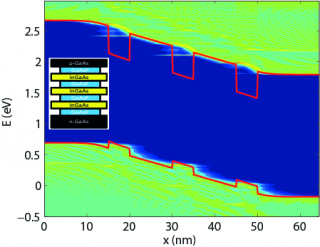Difference between revisions of "Influence of the Initial Filament Geometry on the Forming Step in CBRAM"
From iis-projects
(Created page with "320px|thumb ==Short Description== Your task is to investigate algorithms and/or develop a softw...") |
|||
| Line 1: | Line 1: | ||
[[File:Simulation of the optical properties of nanostructured solar cells.png|320px|thumb]] | [[File:Simulation of the optical properties of nanostructured solar cells.png|320px|thumb]] | ||
==Short Description== | ==Short Description== | ||
| − | Your task is to investigate algorithms and/or develop a software to generate the | + | '''Your task is to investigate algorithms and/or develop a software to generate the geometrical model of electrodes in Li-ion batteries for the simulation on supercomputers equipped with GPUs.''' |
| − | + | ||
===Status: Available === | ===Status: Available === | ||
Revision as of 14:17, 12 November 2014
Contents
Short Description
Your task is to investigate algorithms and/or develop a software to generate the geometrical model of electrodes in Li-ion batteries for the simulation on supercomputers equipped with GPUs.
Status: Available
- Looking for 1..2 Semester/Master student(s)
- Contact: Mathieu Luisier
Prerequisites
- Interest in device physics
- Flair for computational modeling
- Experience with Matlab and/or C/C++ programming
Character
- 40% Theory
- 40% Implementation
- 20% Testing
